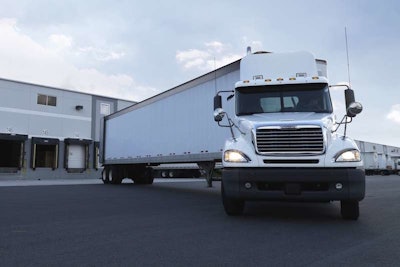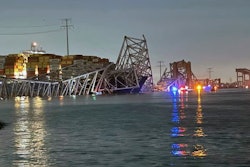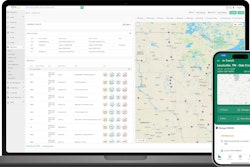
Many carriers are still using antiquated means like spreadsheets to manage operations while modern options like transportation management systems (TMS) continue to evolve and become more sophisticated.
Some trucking companies haven’t grown enough to move beyond the use of spreadsheets, but still, there are a plethora of benefits they’re missing by forgoing a TMS, said Jay Delaney, director of product management for TMS provider Magnus Technologies. The biggest benefit, he said, is the ability to approach load planning in a proactive manner rather than a reactionary stance.
Magnus is in the final stages of developing a new tool that aims to solve load planning challenges by using artificial intelligence to give load planners a view into the future to proactively plan freight moves based on market predictions.
“I've got a driver that needs work, and I’ve got capacity, and I match them up at the last possible minute. I do that because of all the variability and all the chaos that exists in transportation. It's hard to plan in advance. There's just too much change and variation,” Delaney said. “You don’t have the ability to actually plan, even though we call it planning. It's more reactionary. And I think part of that is because we're not really managing the network.”
Magnus’s tool, which will be available as part of its base TMS package, will give planners a five-day advanced view that will allow them to predict potential problems – like being undersold or oversold – in the market and make adjustments accordingly to mitigate costly occurrences.
Magnus’ new tool will also consolidate all the data that gets thrown at planners and digest it into useful bits of information by load that they can act on, rather than wasting time trying to interpret it.
In addition to visibility into data surrounding loads and the market, the tool will give planners visibility into their own KPIs so they can understand the impact their decisions have on the company. Planners will be able to see in advance the impact a decision will have on their company. Some of those KPIs include driver satisfaction and decisions they make around deadhead, utilization and shift miles/hours, Delaney said.
“We believe the planner has a huge impact on the success and viability of a trucking company. They can actually make or break a company,” he said. “Planners by and large don't know the impacts of the decisions they make, and planners make decisions every single day that affect the viability and profitability of that company.”
Delaney said when he looked at the landscape of available TMS, he saw some big opportunities for improvement, using technology to positively impact the planning function.
Another TMS that’s taking a proactive approach to planning is GP Transco’s OpenRoad TMS. The trucking company launched its own TMS years ago when it couldn’t find what it was looking for on the market, and has since offered it to other carriers. The TMS includes the OpenRoad Planner feature that allows planners to visualize an entire week in advance for its entire fleet, showing where every truck is going to go, what time it’s going to arrive, what time it needs to leave and all the attached documents.
Delaney said this proactive approach is necessary for carriers to compete in the market.
“Planning becomes even more critical during times when markets are tight because now you have less ability to afford a poor planning error.
If you miss the mark, and your competitors are doing a better job of planning, and they're managing that chaos that's five days out, and you're not, you're at a competitive disadvantage,” he said. “You're going to end up struggling to survive during those times, whereas customers who are using our planning solution and looking five days out and managing that chaos that we know is going to exist … then your operating ratio improves dramatically, and you can weather those storms.”
The LTL difference
Delaney said proactive planning as opposed to reactionary planning is the “next big leap” the industry will see in the planning function for transportation companies moving forward.
Carrier Logistics Inc. President Ben Wiesen agreed.
“I think there's no question that not only the future but the current of the more advanced systems is to try and optimize every aspect of every operation at a trucking company,” Wiesen said.
While both are moving toward proactive measures, LTL is a bit different compared to the truckload market. Truckload is always trying to optimize the reload to reduce idle time and empty miles. LTL is trying to optimize their line haul network with a fixed terminal location to arrive at a balanced network, meaning that, in general, the amount of freight they have flowing east to west is in balance with the amount of freight they have going west to east, Wiesen said.
“It's impossible to truly always achieve balance,” he said.
But CLI is giving insight into where there is imbalance with its Terminal Route Optimization predictive load planning feature for LTL environments.
Wiesen said the LTL challenge is figuring out which orders should be delivered by which driver and in what order the driver should make those deliveries to meet all the service commitments. He said it is impossible for any human to determine the optimal solution of how to allocate deliveries by driver when you have 50 drivers and an average of 15 stops per driver. There are so many possible combinations.
CLI’s TMS consolidates all of the data from things like bill of lading, the fleet database, customer files, traffic and routes and computes the optimal solution to meet all service commitments in a way that reduces costs. The TMS allows the user to see line-haul projections so they can understand how much line-haul capacity will need to be made available in each lane in order to service the freight on hand.
“At the same time, that starts providing insight into where there is imbalance. So if I know early in the day that I'm already projecting to have more line hauls going east to west than I will have going west to east, that tells me I should try to attract freight that's going west to east in order to better achieve balance,” Wiesen said.
CLI’s TMS evaluates all the freight that is going to move or is moving through the LTL carrier’s network and provides users insight into what’s going to happen in the next 12 to 18 hours.
“They're using it tactically to say, what do I need to plan for in order to move the freight that I have, and they're also using it strategically to say, ‘the day isn't over yet. I can still work with my customer base to try and attract some freight that will fill my backhauls that I'm predicting to have. I don't actually have those backhauls yet until a little later on in the day – 10, 12, 18 hours later – but I know I'm going to have them so I can work with my sales team and with my customers to achieve that balance and better utilize my assets,” he said.












